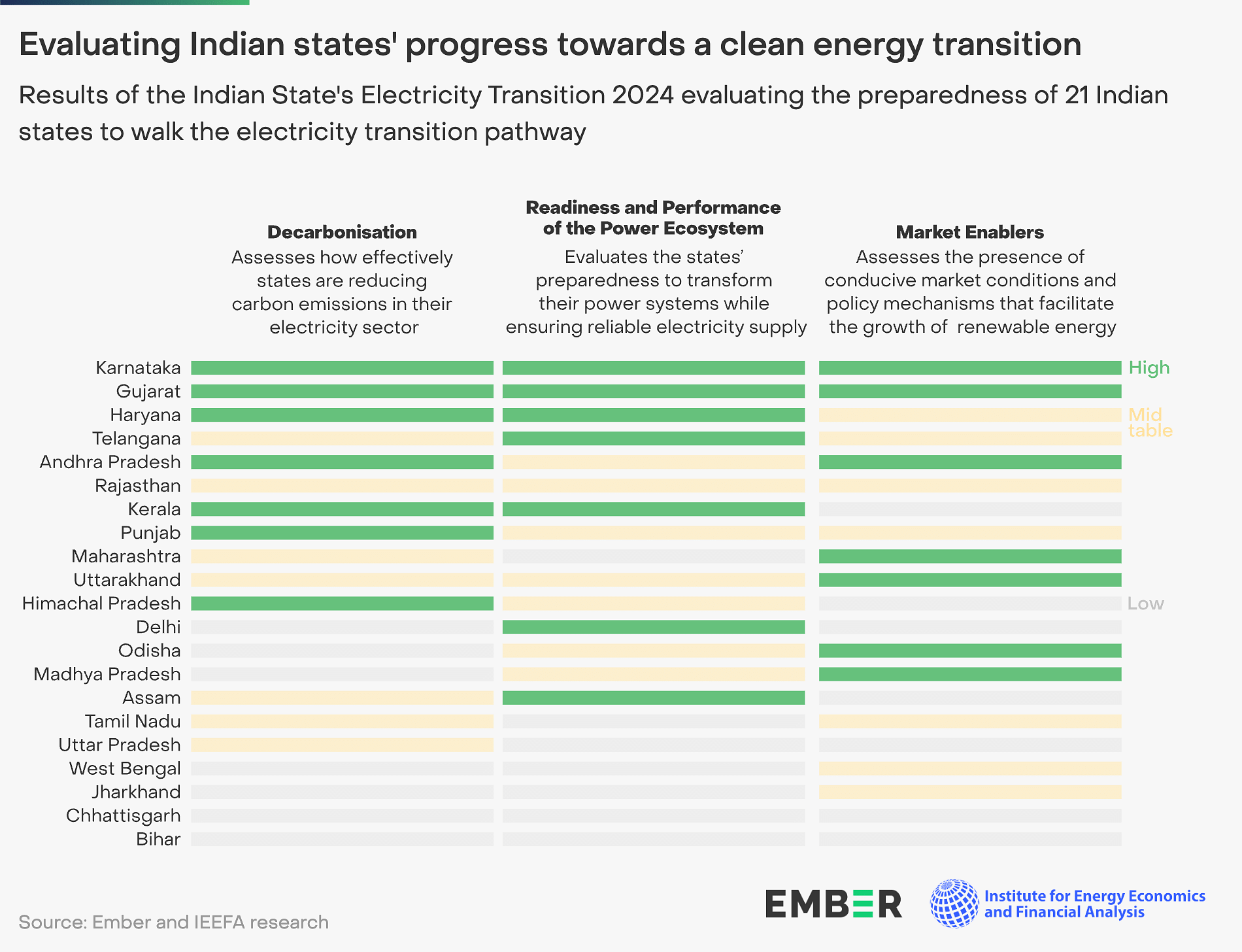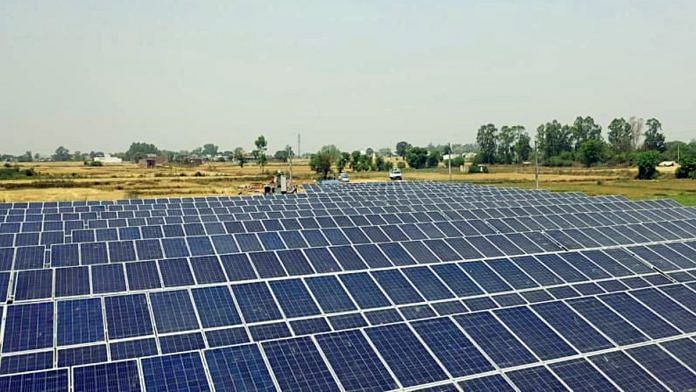New Delhi: Karnataka and Gujarat have shown the way for the second consecutive year when it comes to effectively transitioning to renewable energy, according to a new study that surveyed performance of 21 states.
The two states lead as they have the most renewable energy installed, have integrated it into their electricity grid, and also have favourable market conditions for renewable energy investment, say think tanks Institute for Energy Economics and Financial Analysis (IEEFA) and Ember in the report, which ranked 21 states based on their success in transitioning to renewable energy.
Renewable energy sources, mainly solar and wind, meet 37 percent of Karnataka’s total energy consumption, one of the highest percentage shares among all states. However, its share is still not the highest as Uttarakhand and Himachal Pradesh, reliant on hydroelectric power, overtake the southern state.
Similarly, while Gujarat has added 24 percent of total renewable energy capacity in India since 2020, its share of renewable energy consumption as part of the state’s total energy consumption is only 17 percent.
However, Karnataka and Gujarat have good potential for increasing their renewable energy (RE) consumption as well-oiled ecosystems, with favourable market “enablers” that attract renewable energy investment.
Decarbonisation of the electricity sector, readiness and performance of the renewable power ecosystem, and market enablers, i.e., conditions and policies that promote renewable energy growth, are the parameters that IEEFA and Ember used in their analysis.
“Cyclical weather conditions coupled with faster economic activity is pushing India’s peak electricity demand higher, every year. While the central government is taking steps to integrate more renewable energy into the grid, states, too, need to be prepared to do so,” the report’s contributing author and director of the IEEFA South Asia chapter, Vibhuti Garg, says in a press release.
This is the second year the ‘Indian States’ Electricity Transition’ report has been published. The authors look at information from several sources such as the Ministry of New and Renewable Energy (MNRE), the Ministry of Statistics and Programme Implementation, the NITI Aayog’s India Climate and Energy Dashboard, and reports from think tanks Council on Energy, Environment and Water (CEEW), OMI Foundation, etc.
Also Read: A new think tank on climate policy believes ‘sustainable development & job creation can go together’
How states fared, what’s the way ahead
The report via the three parameters attempts to address the shortcomings in certain states and suggest measures to improve their energy transition to meet India’s goal of net zero emissions by 2070.

States like Odisha, Delhi, and Madhya Pradesh perform well on parameters like readiness of power ecosystem and market enablers because their discoms are equipped to handle renewable energy transition, and their state policies align with attracting investment by renewable energy companies. However, the report finds that they fall behind in decarbonisation, i.e., their electricity consumption is still reliant on thermal/non-renewable energy sources, and they have not been able to integrate renewable energy into their mainstream electricity grid.
“Some states have developed progressive steps, such as boosting decentralised renewable energy deployment, promoting solar pumps for agricultural needs, and enhancing storage solutions to ensure more renewable energy in their electricity systems. But, the transition to clean electricity is still in its infancy in many states,” says Aditya Lolla, Ember’s Asia programme director.
Certain states, the report finds, have not performed well in any of the three indicators and are yet to reach targets for energy transition. Jharkhand, Bihar, Chhattisgarh, and West Bengal feature lowest on the list — mainly due to a lack of solar and wind resources in these regions.
Despite being low on all three parameters, Jharkhand still has a 16 percent renewable energy consumption, indicating that it is slowly phasing out non-renewable energy sources.
The reason why Karnataka and Gujarat fare better than other states is varied — their strengths lie in different factors.
Karnataka has managed to fulfil the MNRE’s renewable energy target but lacks a robust ecosystem because its major discom received the lowest rating among all states from the Power Finance Corporation.
On the other hand, Gujarat has the highest discom rating and has gone 30 percent beyond its renewable energy target set by the MNRE, but falls a little short in the market enabler category because its green tariff rate —Rs 1.5/kiloWatt-hour (kWh) — is the highest among all states.
Green tariffs are electricity plans offered to customers to encourage them to go for renewable energy, and states like Odisha have the lowest tariff at Rs 0.25/kWh. Gujarat still needs to work in this area, says the report.
Haryana, Kerala, Andhra Pradesh, Maharashtra, and Rajasthan all rank along the middle ranges in the study, yet show “immense potential” to be frontrunners in India’s energy transition path.
The analysis suggests that all states have different challenges they need to overcome to decarbonise and to set themselves on the renewable energy path, and also recommends ways for them to do so.
“We recommend the strengthening of state-level regulatory ecosystems. This not only ensures compliance but also promotes growth, data tracking and monitoring, and a conducive environment for business,” says Saloni Sachdeva Michael, an energy specialist at IEEFA’s India Clean Energy Transition.
(Edited by Madhurita Goswami)
Also read: Women must lead climate change fight, they are hit hardest – Dr Soumya Swaminathan



